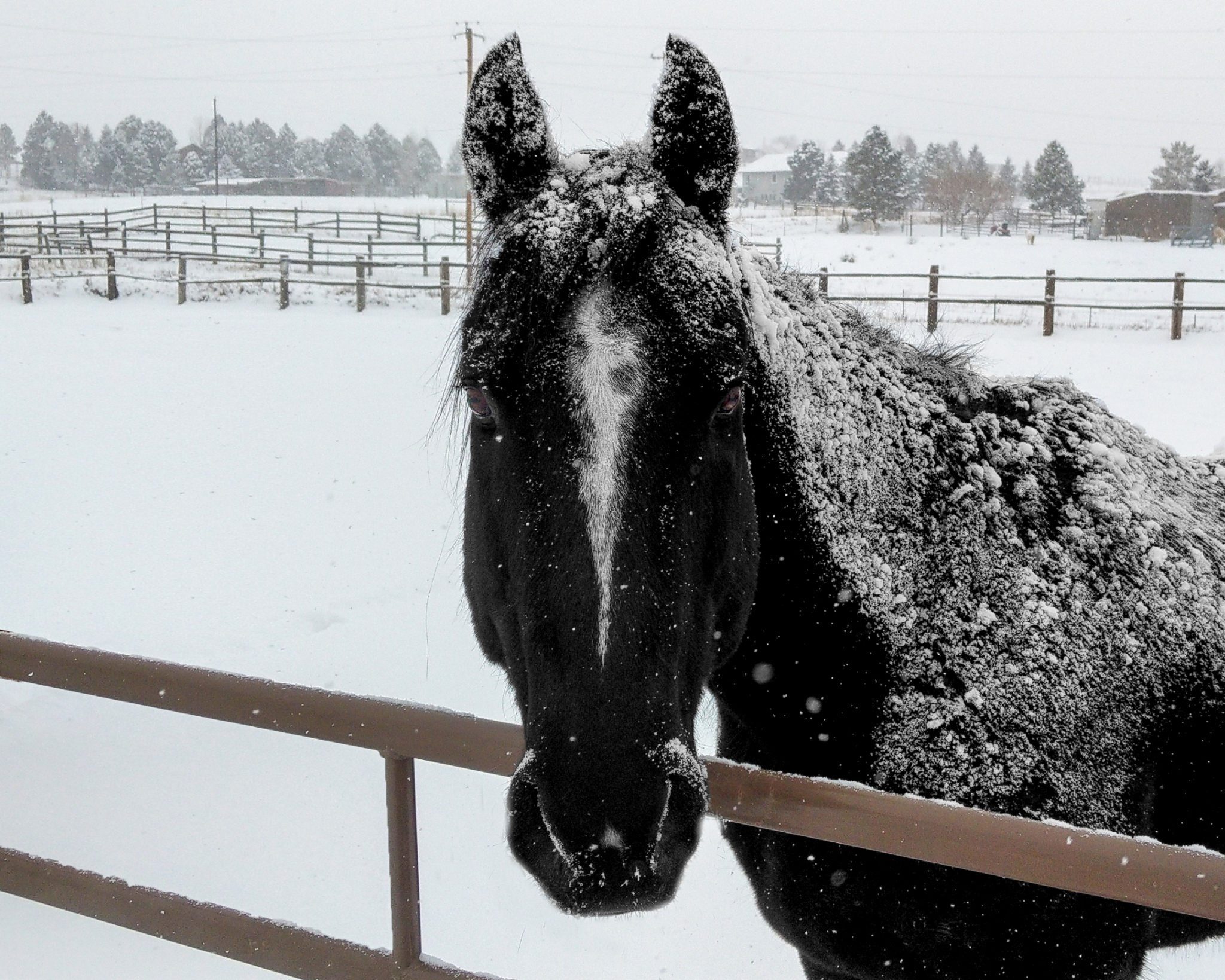Question:
When I have to negotiate around a trail obstacle into tight places with trees and low limbs, my mare gets very nervous. She barges through, and it’s hard to hold back and maneuver through. She’s normally not a spooky horse and is a good trail horse. How can I get her to relax and not get hurt in the process?
Answer:
This is a great question and one that you need to address quickly for your and your horse’s safety.
All horses are naturally claustrophobic to some degree. Their ingrained fear of tight places helps them survive in the wild. They don’t want to be in tight places or any situation they can’t run from quickly.
Therefore, we must train our horses to accept tight places and to trust us to decide where it’s safe for them to be.
A Natural Fear
You can see horses with the worst cases of claustrophobia panic in horse trailers. If a horse is truly claustrophobic, he may load into the trailer easily, then become alarmed and try to crawl out through any opening (emergency escapes, windows, etc.).
You may also see horses with this fear rush through gates or speed through their stall entrances. Panic takes over, and they suddenly have no ground manners. If they’re allowed to rush through consistently, their fear leads to dangerous behavior.
Keep in mind that there’s a broad range of reactions to being in tight places. Some horses may be fearful but quickly get used to tight areas, while others may become extremely panicked in any tight area.
If your mare is panicky or rushing anywhere besides your tricky trail scene, she may take longer to train — the fear may have become more of a learned reaction. If she’s only having trouble on the trail, your training plan shouldn’t take too long.
For either situation, the training process is the same.
Correct Disobedience
Think of your mare’s problem as a disobedience problem, as well as a claustrophobic issue. She might be fearful, but if you coddle her and try to relax her instead of correcting her disobedience, you won’t help the problem.
Your mare should move at the speed and in the direction you choose at all times. When she’s rushing through, she’s making her own decisions and not listening for your cues.
You need to address this behavior. It’s dangerous for your mare to speed through tight places or areas with tricky footing.
If I came to a tight space on a trail and didn’t trust the horse I was riding to listen and go slowly, I’d probably choose to dismount and lead the horse through. I don’t want to risk hurting my knees or hitting my head if the horse rushes through while I’m on horseback.
However, being on the ground isn’t always a safe place to be, either. If you lead your mare, stay to the side and well out of her way, in case she panics. You don’t want her to run over you.
Before you ride your mare through that tricky patch of trail again, schedule some training sessions at home to avoid any unsafe moves.
From the Ground
To work on this disobedience problem, you’ll first work from the ground to help build your mare’s confidence and remind her that you’re present and in charge.
Look for tight obstacles around your barnyard, or create some of your own. You may pile brush close together. Here at my ranch, I like to lead young horses in and around the pines that grow around our barn.
If you’re close to a trail, lead your mare around the natural obstacles you’re having trouble with.
Before you begin: Outfit your mare in a rope halter and long training lead.
Step 1. Approach the obstacle. Walk your mare up to the tight opening, and stop. Make her stand. When she stands still, pet on her, and tell her she’s a good girl. Move forward toward the obstacle one step at a time. Stop and praise her at every stage.
Step 2. Correct her. When your mare’s shoulders reach the tightest spot, she might become worried and get ready to rush through. This is the critical moment. If she rushes through without you prompting her for a step, say “whoa,” and correct her by snapping the lead rope and backing her up.
Step 3. Regain your authority. Use enough pressure to stop your mare in her tracks. You don’t want to apply so much pressure that you start a fight. However, you need to regain your authority, stop her rushing behavior, and let her know she must obey, go at your pace, and walk through the tight space one step at a time on your command. Under no circumstances can she rush through without your permission.
Step 4. Practice. Practice around your barnyard or local trails every day until your mare seems calmer and is obeying. You may only work from the ground 10 to 15 minutes a day or until she walks through the tight space, one step at a time, without rushing.
Step 5. Invest in the training. If you can’t work every day, practice at least twice a week — and don’t ride your mare through tight spaces until your training feels improved. You need to invest in the training to correct the problem. Just going out on the trail and trying it again probably won’t work.
From the Saddle
When you’re ready, ask a friend to take a training ride with you. Make sure your buddy knows that you may need to stop and work your mare from the ground, and make sure you both have time to work as you go.
A few safety notes: At first, choose a tight obstacle that isn’t as demanding or unsafe as where the problem began. Make sure you have ample room to back up and room to move through on either side of the obstacle.
When you progress to riding with a group, make sure the leaders know to stop and wait for you to get through any tight areas before moving the whole herd down the trail.
Before you begin: Outfit your mare with a rope halter and training lead; have your trail tack at hand.
Step 1. Walk her. Walk your mare through the tough spots.
Step 2. Tack up. Tack up your mare in your usual trail-riding gear, applying the bridle over the halter. Attach the training lead, coil the extra length, and tie the coil to your saddle’s front latigos. Then, if you need to lead your mare, you can use the halter and lead, rather than the bridle, for safety.
Step 3. Mount up. Mount up, and walk your mare in the open to warm her up and relax her.
Step 3. Approach the obstacle. Head toward the first obstacle, and repeat the procedure you followed from the ground. That is, walk your mare to the tight place, then stop. Praise her for standing still. Take one step, stop, and praise.
Step 4. Correct her. Keep walking through one step at a time. If your mare rushes, correct her, and back her up.
For more information, see Julie Goodnight’s new book, Goodnight’s Guide to Great Trail Riding, available from HorseBooksEtc.com. Also, watch the Horse Master,television show, which airs Monday and Saturday nights on RFD-TV. Check your local listings.

